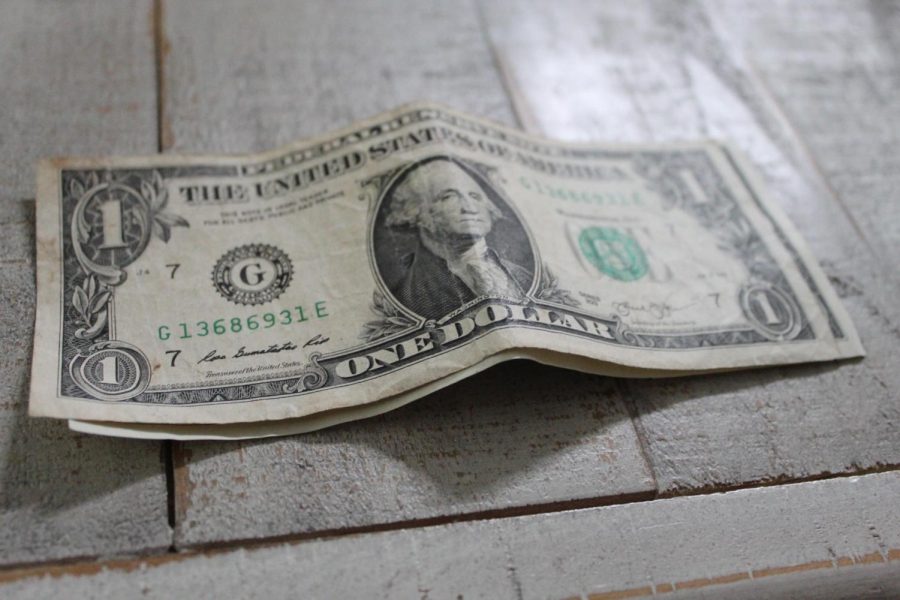Empty Vaults
The Massive National Debt and its Effects
One of 28 Trillion: A one dollar note represents the scope of the National Debt.
October 18, 2021
The National Debt has long loomed over the heads of Congress and Federal Agencies. Ever since the American Revolution forced borrowing by state governments to fund the war effort, and Alexander Hamilton united state debt under the federal government, much of United States History has involved spending despite this debt, with the occasional attempt to lower it.
Only one US president, Andrew Jackson, has ever succeeded in paying it off. Since the beginning of the War on Terror, the US National Debt has quintupled, from roughly 5.6 Trillion to well over 28 trillion today. Since the 1980s, the ratio of Federal Debt to Gross Domestic Product [GDP] , which is the total money made by final goods and services, has skyrocketed from around 34% in 1980 to over 125% in 2020, according to the US National Debt Clock. This puts US debt at an all time high for the nation’s history.
Due to the nature of the National Debt in recent years, being in near-constant increase, the Debt Ceiling is one of the most important factors of political brinkmanship. Many, however, do not understand its role.
“The Debt Ceiling is the maximum amount of debt that Congress is willing to take on,” says Advanced Placement Macroeconomics teacher, Mr. Frank Tupka.
While the Treasury is nominally not allowed to spend more than this, they implement certain measures to prevent the complete evacuation of money from the Federal Reserve. This includes limiting the putting into place of congressional actions. However, despite these measures, had Congress not passed the present debt ceiling, which is meant to last until December, the entire Federal Government would have run out of funds by October 18.
Federal Debt is not just a crisis for the government, it also can have an effect on the average US Citizen.
Business teacher Mr. Frank Balestriere says, “The reason that it’s scary is…as interest rates rise the cost of borrowing is going to increase, including for the United States.”
This increase in the cost of borrowing and higher interest rates can have many effects on life, such as an increase in the cost of privately held student loans, home and car loans, and even the cost of using a credit card. Considering how much of the US economy is reliant on credit and interest, it may lead to an economic downturn.
Balestriere continues, “Who’s the largest buyer of treasuries? [Government Bonds that pay an interest rate each year] The Federal Reserve. It’s a broken system.”
The increase in the National Debt since 2000 is truly massive. An increase of 500% in the amount of money a government has in debt, the same government which helps to run the whole nation’s economy is already dangerous. It is made even worse in the case of the US more specifically, the largest national economy in the world, worth over 20 trillion dollars a year, is and should be absolutely frightening. Even those who are not economically versed know that debt is not a good thing to have in nearly all cases, especially in its present form.









